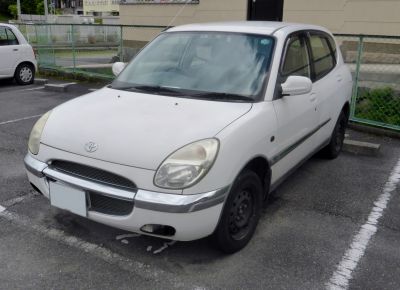 1972 Renault 5 Dimensions, Size & Specs
1972 Renault 5 Dimensions, Size & SpecsMeasurements of the 1972 Renault 5, engineered for optimal performance and comfort
| Dimensions | |
|---|---|
| Length: | 3530-3650 mm139.0-143.7 in11.6-12.0 ft |
| Width: | 1520-1580 mm59.8-62.2 in5.0-5.2 ft |
| Height: | 1385-1410 mm54.5-55.5 in4.5-4.6 ft |
| Ground Clearance: | 130 mm5.1 in0.4 ft |
| Trunk Capacity: | 235 liter8.3 cu ft |
| Trunk Capacity (Max): | 915-955 liter32.3-33.7 cu ft |
| Weight Specifications | |
| Curb Weight: | 760-970 kg1676-2138 lbs |
| Maximal permitted Weight: | 1195-1240 kg2635-2734 lbs |
| Tire Specifications | |
| Rims Size: |
|
| Tire Sizes: |
|
The Renault 5 fifth generation, produced from 1972 to 1985, is a classic French hatchback known for its compact size and practical design. Measuring between 3530 and 3650 mm (139 to 144 inches) in length, 1520 to 1580 mm (59.8 to 62.2 inches) in width, and 1385 to 1410 mm (54.5 to 55.5 inches) in height, the Renault 5 offers a balanced footprint ideal for urban driving and tight parking spaces. Its curb weight ranges from 760 to 970 kg (1675 to 2138 lbs), with a maximum weight capacity between 1195 and 1240 kg (2635 to 2734 lbs), reflecting its lightweight construction and efficient use of space.
The Renault 5’s luggage capacity is notably versatile, providing 235 liters (8.3 cubic feet) of cargo space with the rear seats in use, which expands significantly to between 915 and 955 liters (32.3 to 33.7 cubic feet) once the rear seats are folded down, making it a practical choice for small families and city dwellers requiring occasional larger storage. The vehicle rides on 13-inch rims and supports tire sizes including 145/70 R13, 190/55 R14, 220/55 R14, and 155/70 R13, contributing to its nimble handling characteristics.
With a ground clearance of 130 mm (5.1 inches), the Renault 5 provides sufficient ride height for typical urban and suburban road conditions while maintaining a low center of gravity for stability and driving comfort. Overall, the Renault 5 generation five hatchback stands out as a compact, agile, and practical car from the 1970s and 80s, encapsulating the design and engineering trends of its era while remaining a beloved classic in automotive history.
Discover the standout features that make the 1972 Renault 5 a leader in its class
Have a question? Please check our knowledgebase first.
The Renault 5 produced between 1972 and 1985 has a length ranging from 3530 mm to 3650 mm (approximately 139 to 144 inches), a width between 1520 mm and 1580 mm (about 60 to 62 inches), and a height varying from 1385 mm to 1410 mm (roughly 54.5 to 55.5 inches). These compact dimensions made it ideal for urban use, allowing the car to navigate narrow city streets and park in tight spots efficiently.
The curb weight of the Renault 5 from this generation ranges between 760 kg and 970 kg (approximately 1675 to 2138 lbs), depending on the specific version and equipment. Its maximum permissible weight lies between 1195 kg and 1240 kg (around 2635 to 2734 lbs). These weights reflect the lightweight construction that contributed to the car's fuel efficiency and nimbleness.
The Renault 5 offers a luggage capacity of 235 liters (about 8.3 cubic feet) when the rear seats are upright, providing sufficient space for everyday shopping or small suitcases. When the rear seats are folded down, this expands significantly to between 915 liters and 955 liters (approximately 32.3 to 33.7 cubic feet), allowing for larger cargo items or more luggage, supporting versatile use.
This Renault 5 generation features a ground clearance (or ride height) of 130 mm (around 5.1 inches). This moderate clearance is typical for hatchbacks of its era, providing a balanced combination of good road handling and the ability to drive over minor road irregularities without damaging the underside. However, it's not designed for off-road use or rough terrain.
The Renault 5 came equipped with 13-inch rims, and tire sizes varied depending on specific trims or years. Common tire sizes include 145/70 R13, 155/70 R13, 190/55 R14, and 220/55 R14. This range allowed for some flexibility in tire replacements and performance characteristics, balancing comfort, grip, and style appropriate for a small hatchback.
Yes, the Renault 5 fits comfortably within a standard residential garage. With a maximum length of 3650 mm (about 12 feet) and width of up to 1580 mm (approximately 5.2 feet), it is smaller than many modern vehicles. Typical garages designed to accommodate family sedans can house this Renault 5 easily, allowing room for door opening and movement around the vehicle.
The 1972-1985 Renault 5 significantly improved upon its predecessor, the original 1962-1972 Renault 5 in terms of size and interior packaging. While retaining the compact hatchback format, the newer generation saw slight increases in length and width, contributing to enhanced interior space and comfort. The refinement in design improved aerodynamics and usability without sacrificing the urban agility that the model was known for.
Compared to contemporaries like the Fiat 127 or the Volkswagen Polo of the same era, the Renault 5's dimensions were quite competitive. Its length (3530-3650 mm) and width (1520-1580 mm) placed it within the compact category but allowed slightly more interior comfort and cargo flexibility. Its relatively low curb weight also contributed to nimble driving dynamics, making it a favored choice in dense urban settings versus some bulkier rivals.
The Renault 5 from 1972 to 1985 was primarily produced as a hatchback, which was the dominant and defining body style of the model. This design contributed to its versatility and practicality, offering easy access to the cargo area and flexible seating arrangements, a key selling point in urban and small family car markets. There were no other official body variants like sedans or wagons for this specific generation.
The Renault 5 was popular for several reasons: its compact yet spacious design, fuel efficiency, and nimble handling made it perfect for city driving. It featured practical hatchback access to the cargo area, a lightweight chassis, and a range of efficient engines. Additionally, its affordability and Renault’s strong brand presence across Europe helped cement its status as an iconic model. Its adaptability, ease of maintenance, and lively character gave it a lasting appeal even beyond its production run.
Discover similar sized cars.

| Production: | 1998-2004 |
|---|---|
| Model Year: | 1998 |
| Length: | 3660 mm144.1 in |
| Width: | 1600 mm63.0 in |
| Height: | 1450 mm57.1 in |
